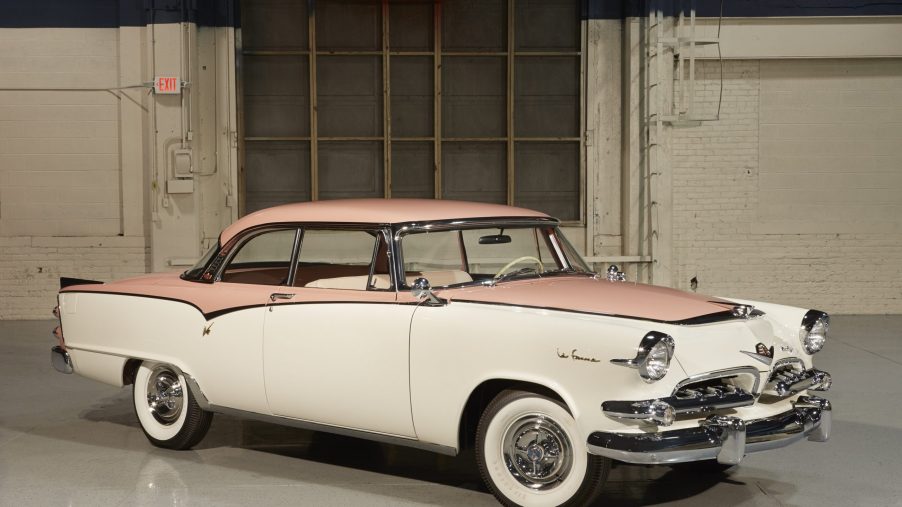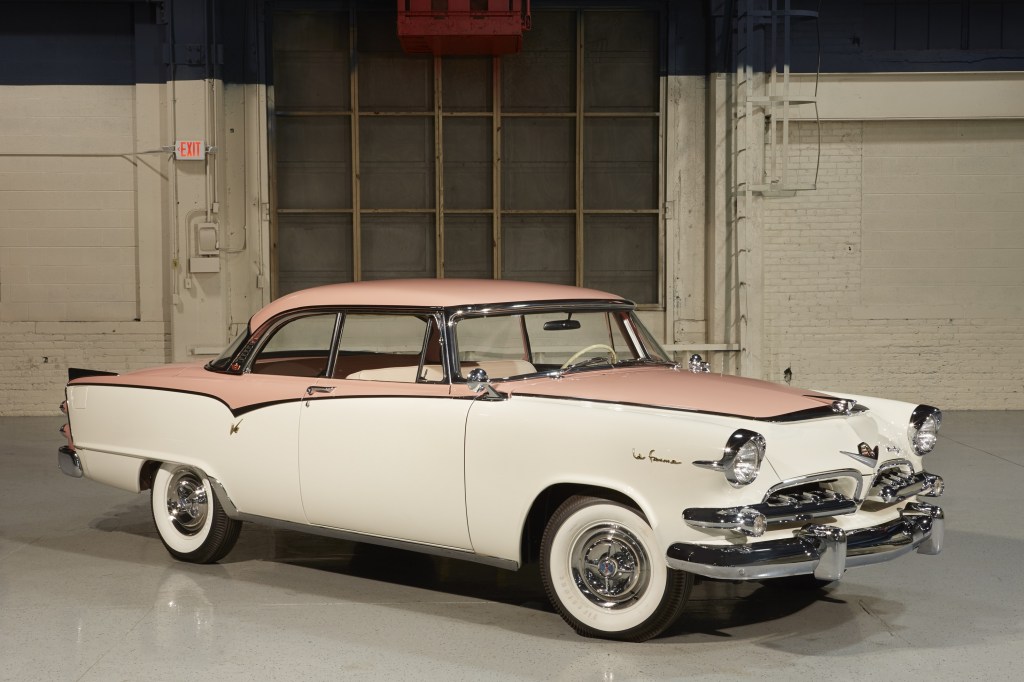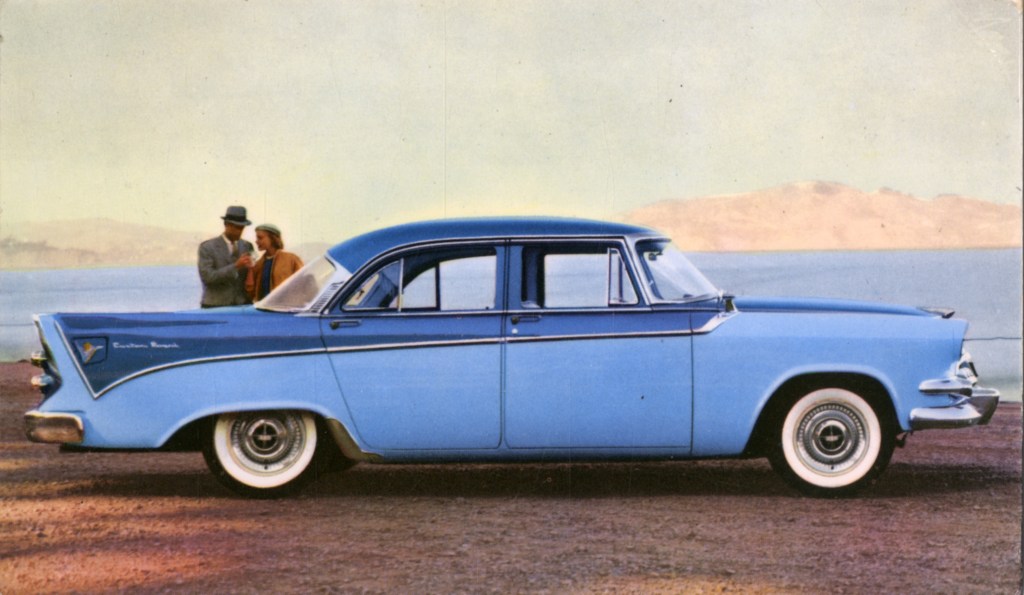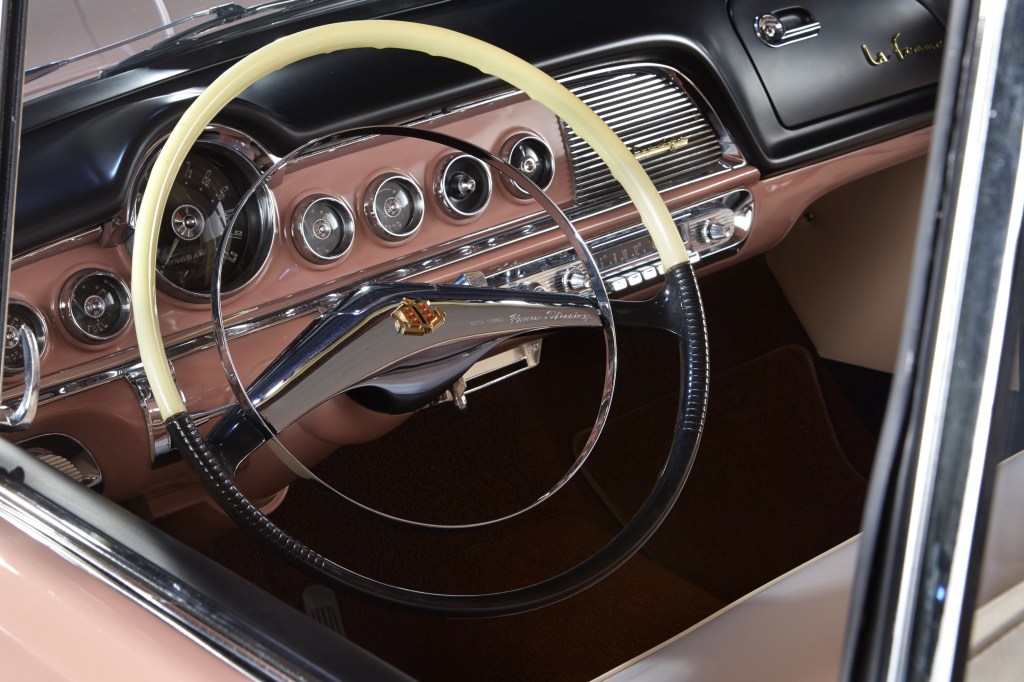
The 1955 Dodge La Femme Tried Finding Female Buyers and Failed
Even today, women often face a significant amount of pressure, attention, and criticism in the car world. Whether it’s at a race, dealership, or a classic car show, women are unfortunately still sometimes treated as if they don’t belong. But while these attitudes are slowly changing, they were in full swing in the 1950s. And if there’s one car that represents that mood best, it’s arguably the Dodge La Femme.
In 1955, Dodge tried making to make a car for women—without involving any women

One reason why Buick is so popular with female buyers is that women are highly involved with its designs. But while there are plenty of female engineers, designers, and general workers in the auto industry today, that wasn’t the case in the ‘50s. And it showed with the Dodge La Femme.
During the La Femme’s 1955 launch, Dodge claimed it was the first car designed expressively for female motorists. Technically, it wasn’t, Hagerty points out. Although it wasn’t designed for women per se, the 1954 Nash Metropolitan was the first American car marketed towards them. So, while the La Femme’s origins lie with two 1954 Chrysler concept cars, Nash beat Dodge to the production punch.
Now, there’s nothing inherently wrong with marketing a car and/or its features towards women. And as modern crash statistics show, ignoring women during the design process often has literally deadly consequences. But it’s not just that Dodge failed to take female car buyers into account when designing the La Femme. It’s that there wasn’t a single woman involved at any point during the design and engineering process. And no one thought to ask women what they actually wanted, Kearney Hub reports.
To repeat: Dodge designed a car with what it thought women wanted but didn’t bother asking for any female input. Given the chauvinistic attitudes at the time, this was sadly par for the course, KH muses. And it shows with the finished product.
The Dodge La Femme’s “posturing for feminine appeal” only went skin deep, Hagerty says

Like the 1954 Chrysler concepts that predated it, the 1955 Dodge La Femme is based on a pre-existing contemporary car. Specifically, the Dodge Custom Royal Lancer hardtop coupe, Hagerty says.
The distant ancestor of the Charger and Magnum wagon, the Royal Lancer is a solid 1950s car, Hagerty says. And because it’s mechanically identical, the Dodge La Femme shared the Royal’s performance. The 1955 models, for example, have a 4.4-liter V8 with up to 193 (gross) horsepower and push-button automatic transmission. And the 1956 La Femmes have 218-hp 5.2-liter V8s.

However, while the Dodge La Femme had solid bones, its attempts at appealing to female buyers were, um, not great. Most of those attempts are visual. For instance, 1955 examples have a pink-and-white color scheme while 1956 cars have lavender-and-white ones. Inside, the coupe has pale-pink vinyl upholstery with gold trim, a pink- or gold-colored headliner, and a gold ‘La Femme’ dashboard script.
Arguably worse, though, are the accessories Dodge offered in the La Femme. Admittedly, the pink umbrella is handy, and Rolls-Royce offers umbrellas in its cars today. But the matching pink hat, raincoat, compact, lipstick, lighter, cigarette case, and shoulder bag are just a bit much. So are their dedicated storage compartments.
It’s hard and often expensive finding an accessorized example today
Rather predictably, the Dodge La Femme didn’t sell well, and not just because this ‘car for women’ didn’t take women’s needs into account. As with today’s EV situation, many households in the 1950s could only afford and/or store one car. Thus, a car like the La Femme was an unnecessary extravagance, KH explains.
In total, Dodge sold roughly 1500 La Femmes in 1955 and 1956 combined. And only 30 or so still survive, KH says. But if the cars themselves are rare, their model-specific trim pieces and accessories even rarer. As a result, complete La Femmes can be rather pricey. The example currently on display at Kearney’s Classic Car Collection in Nebraska has over $30,000 worth of parts installed.
Luckily, women today have better-designed cars—and pickup trucks—available for purchase.
Follow more updates from MotorBiscuit on our Facebook page.


